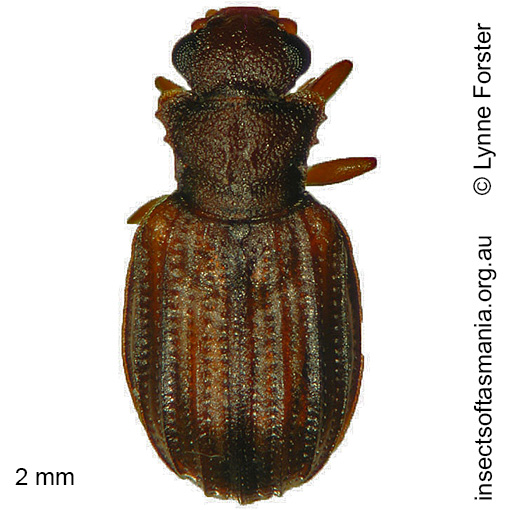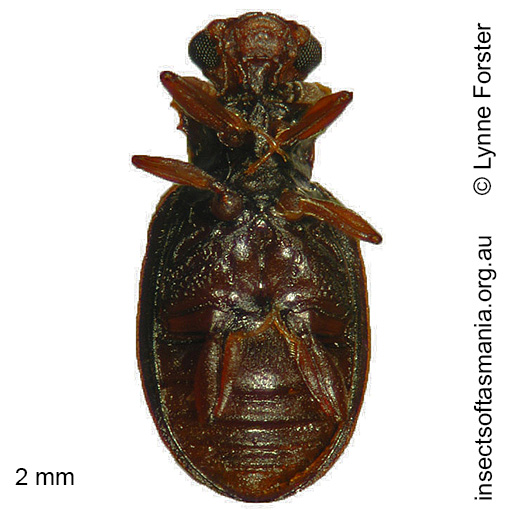
Enicmus REIKE sp nov 3 (a species of minute brown scavenger-beetle)
Basis for Tasmanian occurrence
Classification
Order: Coleoptera
Suborder: Polyphaga
Superfamily: Coccinelloidea
Family: Latridiidae
Subfamily: Latridiinae
Morphology
Flightedness: winged and assumed capable of flight
Morphology (characterised by L. Forster): — Elytra bearing carinae — Head with lonitudinal medial line — Pronotum tapers from apex to base, with a pair of small teeth one-third and two-thirds of the way along lateral edge; pits visible.
Ecology
Association with dead wood or old trees: at least facultatively saproxylic
Ecological attributes: — May occupy logs or trunks of Eucalyptus obliqua, at least temporarily, since found having emerged within six years of felling (Grove et al., 2009).
Collection method(s) for TMAG material: — Baited trapping (funnel trap) — Emergence trapping from log of Eucalyptus obliqua — Flight intercept trapping (trough below Malaise trap) — Malaise trapping — Pitfall trapping — Vane trapping.
Source ecological literature:
Grove, S.J. (2009b). Beetles and fuelwood harvesting: a retrospective study from Tasmania’s southern forests. Tasforests 18: 77-99.
Baker, S.C. (2006b). Ecology and conservation of ground-dwelling beetles in managed wet eucalypt forest: edge and riparian effects. PhD thesis, Univ. of Tasmania, Hobart.
Grove, S. et al. (2009). A long-term experimental study of saproxylic beetle … succession in Tasmanian Eucalyptus … logs… In: Fattorini, S. (Ed.), Insect Ecology and Conservation. Research Signpost, pp. 71-114.
Yee, M. (2005). The ecology and habitat requirements of saproxylic beetles native to Tasmanian wet eucalypt forests: potential impacts of commercial forestry practices. PhD thesis, Univ. of Tasmania, Hobart.



